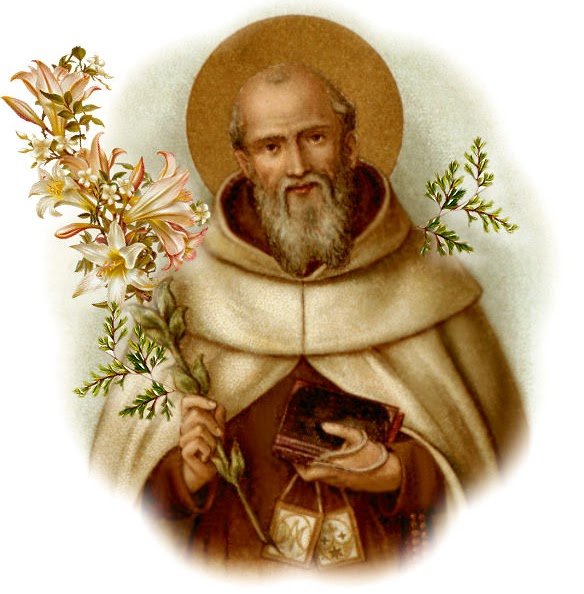THE PATRONESS




The mountain is situated in Eastern Israel, where the Carmelite order originated. It is known as "Hakkarmel," which translates to "the garden and vineyard of the Lord." Over time, it became simply "Karmel" and in Arabic, "Kurmul." Today, it is recognized as "Jebel Mar Elias" or the Mountain of Elijah.
While the New Testament does not mention Mount Carmel, it is frequently referenced in the Old Testament. Even in its early history, the mountain held sacred significance for the Israelites. Before Elijah's arrival, an altar dedicated to Yahweh was already erected on its summit. However, Mount Carmel gained widespread recognition through the events chronicled in the Book of Kings (1 Kings 18:17-40). This is where Elijah demonstrated that Yahweh, not Baal (the god of King Ahad and 450 prophets), was the true God. Elijah challenged the prophets of Baal to simultaneously offer sacrifices. Despite their fervent prayers, no fire descended to consume their offerings. When it was Elijah's turn to call upon Yahweh, fire suddenly descended from the sky and consumed the sacrificial bull. Witnessing this, the people exclaimed, "Yahweh is the God! Yahweh is the God!"
In two consecutive years of drought in Israel, it was on the summit of Mount Carmel that Elijah prophesied rain. As he predicted, a small cloud appeared on the horizon, followed by heavy rain and strong winds (1 Kings 18:41-46).
Since the 4th century BCE, the philosopher Iamblicus and later, 13th-century rabbis, associated this mountain with the Prophet Elijah, considering it the most sacred of all places. Consequently, Jews, Christians, priests, and prophets have resided in this holy location.
According to Carmelite tradition, their order originated with a group of hermits on Mount Carmel, who succeeded the schools of the prophets in early Israel. Although records of the hermits before 1190 are scarce, it is evident that pilgrims and former crusaders had settled here earlier, given the mountain's connection to Elijah. A monastery was established in honor of Mary around the 12th century, leading to their name, the Order of the Virgin of Mount Carmel or Carmelites. Between 1206 and 1214, they received papal recognition. In 1229, Saint Simon Stock resided on Mount Carmel for six years. In 1237, he attended the Carmelites' general chapter convened by Alanus, the fifth general of the order. During this meeting, due to the Saracen threat, they decided to relocate to Europe.
Between 1245 and 1247, after Alanus's resignation, St. Simon Stock, then 82 years old, became the sixth general. He founded the Confraternity of the Scapular, approved by the Pope. In 1251, he invoked the Virgin Mary to aid his order, and she appeared to him in Cambridge, England on July 16, 1251, holding a scapular. She said, "Please accept this scapular, my beloved son, as a sign of my confraternity. This is for you and all the Carmelites—a special symbol of my grace. Whoever dies wearing a scapular will never suffer the fires of hell. It is a sign of salvation, protection from dangers, a promise of peace, and a testament." Pope Sixtus V officially recognized this apparition in 1587, and it became known as the "brown scapular" of Our Lady of Mount Carmel. The feast of Mount Carmel, originally celebrated on August 15th, the day of Mary's Assumption into heaven, was transferred to July 16th, the day of the Virgin Mary's appearance to Saint Simon Stock.
SCAPULAR
The scapular represents a special form of protection granted by the Virgin Mary to the Carmelites and those who wear it. It serves as a symbol of salvation. It is important to clarify, however, that it is not akin to an amulet that guarantees immunity from bullets or other physical harm. Even if one wears the scapular, it is still possible to be injured or even killed by bullets; it does not possess magical properties that ensure direct passage to heaven, especially if the wearer has committed a mortal sin.
Religious scholars emphasize that those who wear the scapular typically have a strong belief in God and the Virgin Mary. This faith inspires them to follow God's will. If, at some point, they do commit a sin, the Virgin Mary is believed to intercede on their behalf at the time of their death, provided that no mortal sin was committed. Through the scapular, the Virgin Mary is thought to advocate for the wearer to prevent their descent into hell. This promise led to the widespread adoption of the scapular throughout Europe in the 16th century, with even popes and saints choosing to wear it.
In contemporary times, however, relatively few people wear the scapular, often due to a lack of awareness about its significance. To address this, when Msgr. Angelito Santiago, Jr. assumed the role of parish priest in June 2007 at the Barasoain parish, he aimed to revive the devotion to and wearing of the scapular. The scapular represents a symbol and promise of salvation granted by the Virgin Mary to those who wear it.
Between 2007 and 2008, the parish distributed free scapulars to churchgoers attending the 6:00 AM mass. In 2009, scapulars were distributed during all masses on a designated Sunday. Furthermore, from 2007 to the present day, scapulars have been distributed to churchgoers during every novena mass as part of the preparations for the feast of Our Lady of Mount Carmel. Wearers of the scapular are encouraged to pray the rosary daily, heed God's will, and maintain a pure heart according to their social standing in order to attain salvation.
